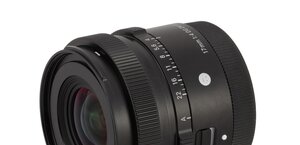Venus Optics LAOWA FFII 90 mm f/2.8 CA-Dreamer Macro 2X
3. Build quality
In the photo below the Venus Optics Laowa FFII 90 mm f/2.8 CA-Dreamer Macro 2X is positioned between the Canon EF 100 mm f/2.8L IS USM Macro and the Voigtlander Apo-Lanthar 2/50. While describing a similar photo from the test of the Tamron 90 mm f/2.8 Di III Macro VXD, we noticed a very small diameter of the front element of that lens. Here we land on the opposite side because the front element of the Laowa is big, even slightly bigger than the element of the Canon with a tad longer focal length. It is an optimistic piece of news for such categories of our test as vignetting. Still, we are going to confirm that in the appropriate chapter.
 |
Please Support UsIf you enjoy our reviews and articles, and you want us to continue our work please, support our website by donating through PayPal. The funds are going to be used for paying our editorial team, renting servers, and equipping our testing studio; only that way we will be able to continue providing you interesting content for free. |
- - - - - - - - - - - - - - - - - - - - - - - - - - - - - - - - - - - - - - - - - - - - - - - -
 |
An aperture ring, just 7 mm wide, half of its surface covered by metal ribbing, is the next part of the lens. The ring features markings by f/2.8, f/4.0, f/5.6, f/8, f/11, and f/22. Instead of f/16.0 there is just a dot. The ring moves smoothly with audible slight clicks when you hit the full aperture marking.
Further on you see another immobile ring, this time with a depth of field scale and aperture markings by f/5.6, f/11, f/16, and f/22.
 |
Such a value would allow you very precise settings if only the lens featured contacts and could communicate with a camera body. Without contacts your camera doesn't know that you move the focus ring and it won't automatically enlarge the image and without that focus control is definitely less comfortable. Of course you can enlarge images with the help of dedicated buttons you find on the camera body but it need additional attention and it makes the whole focusing process more difficult.
 |
The front element doesn't move, is quite flat, 48 mm in diameter, and positioned quite shallow in the barrel. When you shoot applying the 2:1 maximum reproduction ratio, your aim is positioned in a distance of just 7 cm from the front element.
When it comes to optical construction you deal here with 13 elements positioned in 10 groups. The producers weren't skimpy when it comes to special elements – there are three elements of very high refracting index, and also three made of low dispersion ED glass among them. Inside you also find a round aperture with as many as thirteen blades that can be closed down to a value of f/22 at the maximum.
Buyers get in the box with the lens: both caps, and a hood.
 |






